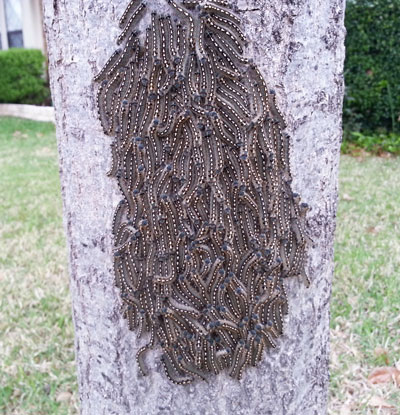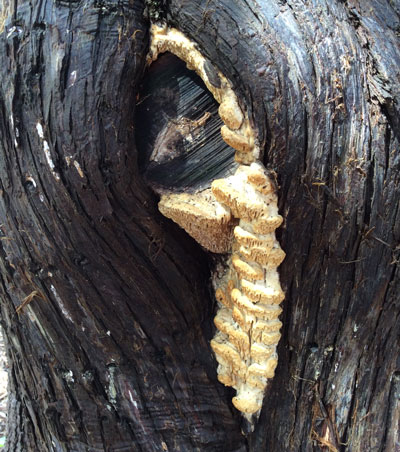Questions and Answers: May 2015
This is the most-read part of e-gardens, as Neil addresses your questions. If you’d like to send him your own question and a photo (required) to go with it, send it here. Note that Neil can’t reply individually, and that a plant ID question is usually of interest only to the person asking it. That said, here are his answers to this month’s questions.
Question: Do gardenias ever get nematodes? This plant is six years old, and it has been ailing the entire time. It gets morning sun, and we give it iron and azalea/gardenia fertilizer. What will it take to get it growing better? Other plants beside it look fine. S.S., Paris.

Answer: Yes, gardenias certainly do get nematodes. A soil test for nematodes could determine fairly quickly whether they are responsible. The Texas A&M Plant Disease Diagnostic Laboratory can help you with this. http://plantclinic.tamu.edu/files/2010/10/D827r06111.pdf Other than the fact that you are fairly far north for gardenias to be able to survive Texas winters, you should be able to grow them. Lamar County soils should be ideal — enough so that adding iron would not be needed. (Personal note back: it is always great to hear from a friend of long standing!)
Question: Two quick questions. Will bottlebrush like this one in Seguin do well in North Dallas? Also, will this product work at getting live oak roots out of a sewer line that’s about 10 feet from it? Or would I be better off calling a plumber? J.G., Dallas.


Answer: Bottlebrush won’t survive normal winters in the northern half of Texas. I had trouble as a young gardener getting them to survive in College Station. As for the tree, I would definitely call a plumber. Products like this might kill roots, but there is also the chance that they will damage trees. (Same personal note back: great to hear from a friend and former associate!)
Question: What is a compact vine that I could use to fill the space this plant is occupying? Do any nurseries sell vines already growing on trellises? K., Richardson.

Answer: Carolina jessamine would be the best replacement for this fringeflower. I doubt if you’ll find one already growing on a trellis, but that shouldn’t matter, since it grows at a good pace. You might need to thin it out every couple of years after it finishes blooming in spring.
Question: Our rose bushes are way too tall. When can I prune them back to about one-third of their height? They are covering our window. M., Aledo.

Answer: Pruning that is that major should really be done in early February. To trim the bushes that extensively during the growing season would weaken them seriously, perhaps even kill them. You could reduce their height by 10 to 20 percent per pruning if you were to remove the tallest canes every couple of weeks.
Aim to reduce their height by one-third after they finish blooming. Then, a few weeks later, take another 10 or 15 percent off by selectively trimming their tallest stems. By August, you can reduce them down to half or so of their current size. That sort of stair-step pruning wouldn’t be noticeable, and it wouldn’t shock the plants as much as one drastic pruning in the middle of the growing season.
Question: This has started to show up on our peach trees’ leaves. There seems to be nothing inside of these. We have fruit on the trees. Is it safe to spray with anything now? K.M., West.

Answer: This is appropriately named peach leaf curl. It’s a bacterial problem that shows up in early spring. The affected leaves will fall off fairly soon, and the problem will go away for one or more years. It’s basically of no major harm to the tree, but if you feel you need to spray, you’d want to do so in late fall, just after the leaves have fallen. Use a copper-based fungicide from an independent nursery or farm supply store and spray all of the twigs.
Question: We recently noticed that a yaupon holly by our pool has a large patch of bark that is peeling from its trunk. It is on the side facing the privacy fence. I do not see new bark forming where the old bark has been lost. We have seen yellowed leaves dispersed throughout the tree. Should we be concerned? No name, no city given.


Answer: Yes, you need to keep an eye on this. Obviously, the problem’s not due to sunscald of the trunk. It might be from an old injury at the time the tree was planted. Carefully flake away any loose bark. Use a utility knife very carefully and trim off any bark that is standing away from the trunk. Hopefully you will either see or soon will find a roll of new bark forming. There is probably little other call to action at this point.
Question: (This is a compilation of probably 50 questions I’ve been asked almost everywhere I go.) What are these caterpillars, and is there anything I need to do to protect my tree going forward? T.R., Garland.

Answer: These are forest tent caterpillars, and they were everywhere this spring, at least in DFW. I had 8 or 10 posts on them on my Facebook page alone. I have never seen an outbreak like this, but that’s the way insect populations tend to behave. The caterpillars are gone by now. No call to action.
Question: Do I need to worry about my Indian hawthorns? We travel a great deal, and this is how they looked when we got home. I have sprayed with a product for insects and diseases. M.M., no city given.

Answer: These plants are being ravaged by Entomosporium fungal leaf spot. Unfortunately, there is no product that stops this disease. It has all but eliminated redtip photinias from our landscaping options, and now it is doing the same to their cousins, Indian hawthorns. If (more likely, when) you decide to replace these, Carissa holly grows to about the same size and form. It does not flower, but it also doesn’t come down with this disease.
Question: I’m pretty sure we have lost plants to cotton root rot. They have died suddenly, and their roots seem to be gone. It’s hard to have a formal rose garden without roses. Do you know of any that are resistant to the disease? B.R., Trophy Club.

Answer: I may be mistaken, but I thought you had red soil in Trophy Club. If so, cotton root rot would not have been high on my list of suspects, since most red soils are acidic. Cotton root rot is found primarily in alkaline soils. But, assuming that’s what did kill your plants, your best way around it would be to excavate 12 inches down and replace the existing soil with a landscaping mix that contains a great deal of organic matter to help keep the pH lower. If cotton root rot was the culprit, that should allow you to grow new roses successfully. However, I am not aware of any variation in susceptibility to CRR among the varieties.
Question: We planted these last spring, and clearly they haven’t fared well. What disease is this, and what alternate plants would you suggest? J., no city given.

Answer: I will guarantee you that this is not a disease. The reason I can be so confident is because I have seen this same thing happen to my own Oakland and other hollies on a few occasions over the years. These plants don’t wilt when they’re dry, so it’s very easy for us to allow them to get beyond the point of no return before we water them. This plant merely got too dry. Hand watering is crucial to new plantings, especially hollies, for the first year or two. If you liked your choice originally, I’d go right back with a new one.
Question: Should I thin out this bed of cannas? Should I move some of them to the rectangular bed? No name, no city given.


Answer: That’s your call, but this is not the time to dig and divide cannas. They are growing at breakneck speed. That’s a project for either very late fall or mid- to late February while they are dormant. I agree – the rectangular bed does look sparse. If these were mine, I would probably move some of them next February.
Question: I have 2 to 3 inches of mulch over my shrub beds. Will that require any special kind of fertilizing? No name, no city given.

Answer: Honestly, I don’t use nearly that much mulch in my own beds. One inch is usually enough, at least for me. As far as fertilizing is concerned, I would rake back the mulch and apply the nutrients, then put the mulch back in place. If you don’t do that, the mulch will absorb and hold most of the nutrients. I fear that that much mulch would do the same thing with water, absorbing much that goes onto the bed.
Question: We have several juniper trees that have been limbed up. One has developed this fungus at the site of the pruning cuts. All sides have these growths. Is there anything we should do to stop it? M., Aledo.


Answer: This is an unusual question. I’ve seen this occasionally on my own junipers and it has never given me any reason for concern. However, I never saw this much of it. I believe I might take a scrub brush and knock as much off as possible. Then I would spray with a 10-percent solution of chlorine bleach applied just to the mold. From that point on, sit tight and see what develops. Junipers are fierce competitors. I’ll bet this one will be fine.

